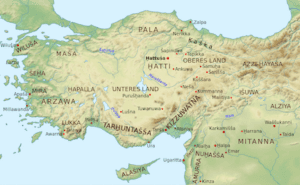
Recently, scholars have focused on changes and transitions among ancient civilizations and population centers of western Anatolia and the eastern Aegean with increasing interest, particularly during the transitional periods from the Late Bronze Age to the Classical period. Place names such as Wilusa (Troy), Millawanda (Miletus), Hattusa (of the Hittites), Apasa (Ephesus), Sardis, and population groups like the Luwians, Lydians, Lycians, Carians, and the Mycenaeans, all played prominent roles in events and activities of Bronze Age and Iron Age western and coastal Anatolia, and its interface with the rest of the Aegean world during those time periods.
Archaeologist and scholar Dr Jana Mokrisova, research associate at the University of Cambridge, working with the Migration and the Making of the Ancient Greek World project under the direction of Prof. Naoíse Mac Sweeney (University of Vienna), is helping to shed light on various aspects of ancient mobility in the eastern Mediterranean and more specifically, western Anatolia and the eastern Aegean, from the Late Bronze Age to the Classical period.
In a recently published podcast, Mokrisova addresses important questions about this comparatively less known subject and its significance in understanding the ancient history and development of this part of the eastern Mediterranean world.
Ester Salgarella, of the podcast series Aegean Connections, interviews Mokrisova on the subject. The podcast interview is available for free at this website.
Cover Image, Top Left: Map of the cities and regions of Bronze Age Anatolia. Al-qamar, CC BY-SA 4.0, Wikimedia Commons
_____________________________
Advertisement




